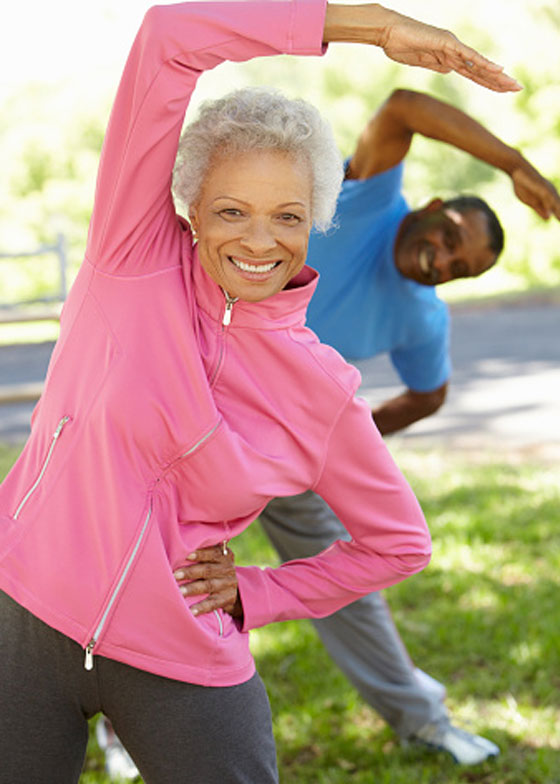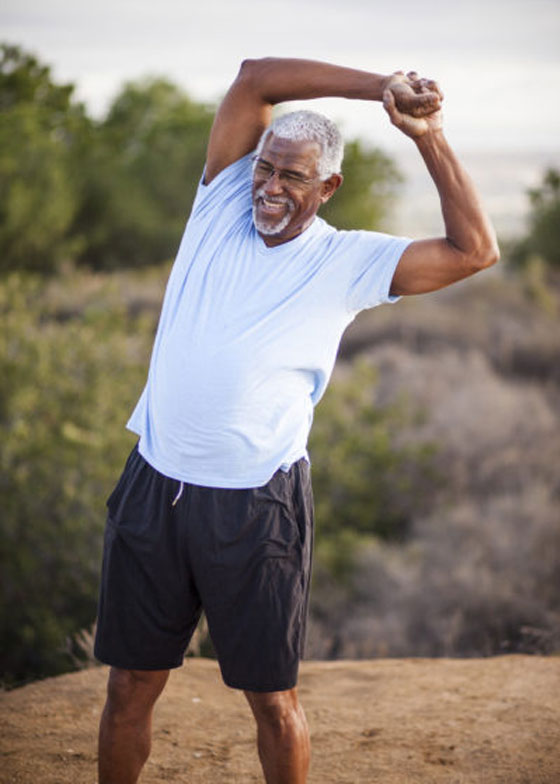Stay Agile at Any Age
You may have noticed a few of the signs already. Maybe when you get up in the morning, you’re stiffer than you used to be. Or your knees get achy after sitting awhile. Over time, everyone’s body ages and shows signs from natural wear and tear. Regular exercise helps delay the process and keeps you agile. However, many people forget to include mobility exercises in their routine.
Both flexibility and mobility are important to how your body functions. Flexibility refers to the ability to move a joint through the full range of motion, or fully lengthen a muscle. Mobility involves a bit more. It includes flexibility, as well as strength, coordination and balance.
Staying active and preserving mobility are important as you age. Here are three ways you can make sure your body can stay agile for a long time to come:

- Stretch every day. Simple stretching can increase your range of motion and decrease pain in conditions like rotator cuff tendinopathy. The great thing about stretching is that you can do it anywhere, and it only takes a few seconds to a few minutes. There are three types of basic stretches. You can choose to focus on increasing flexibility or you can work on mobility, too.Static stretching: You probably learned this style in middle school. (Think standing toe touch and thigh stretch.) Static stretching increases flexibility by putting light tension on a muscle and holding the position for 30 to 60 seconds. Be sure not to bounce. It’s best to warm up first before attempting this type of stretch.Isometric stretching: In this type of stretching, you get into a static stretch position, then gently contract the stretched muscle. Keep the length of the muscle and the angle of the joint steady. Hold for 10 to 15 seconds then relax your muscle for about 20 seconds or more, then repeat. Isometric stretching increases strength and flexibility.Dynamic stretching: When you roll your neck, do walking lunges or arm windmills, you’re doing dynamic stretching. A dynamic stretch takes a specific movement and allows the joints and muscles to move through their full range of motion.Dynamic stretching is controlled and smooth. It’s a great way to warm up before exercising and helps increase range of motion.When beginning a stretching routine, remember to take it slow. Stretching too quickly and too far can trigger your body’s defense mechanisms to protect itself from tearing joints and muscles. Stretch just until you feel tension. If you feel pain, you’ve gone too far.
- Discover foam roller self-massage. They cost as little as $10 and come in many lengths and densities. A foam roller is an easy and convenient way to release tension in muscles and connective tissue, which helps increase flexibility and improve mobility. For beginners, a medium foam roller may be most comfortable.
- Use your body’s natural movement. Using your body’s natural movements can increase your mobility, stability and balance. Plus, it adds a little playfulness into your day. One example of a “natural movement” activity is crawling. Getting down on all fours strengthens and mobilizes just about every muscle and joint in your body. Climbing, carrying, throwing and catching (safely and gently, of course) are other ways to keep yourself supple.

However you choose to move, remember to breathe freely, start slow, be gentle, and don’t bounce.
Perhaps most important: Find stretches and other activities you actually like to do that fit into your daily routine. That’s the best way to guarantee you’ll stick with a more flexible, agile way of life.


